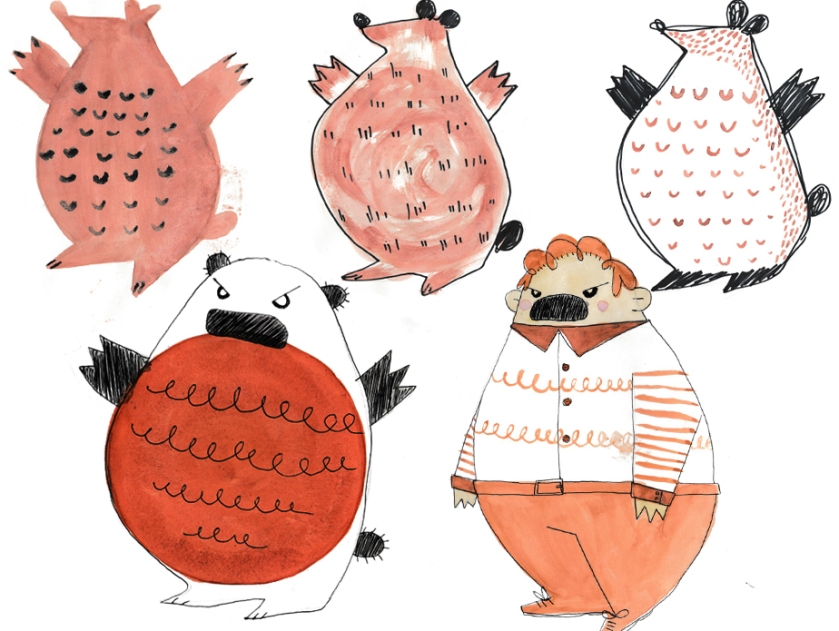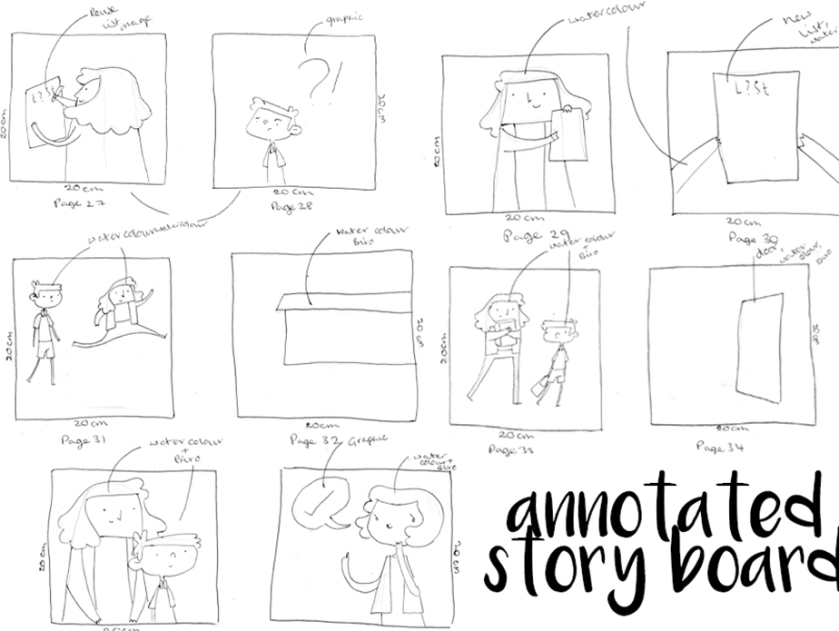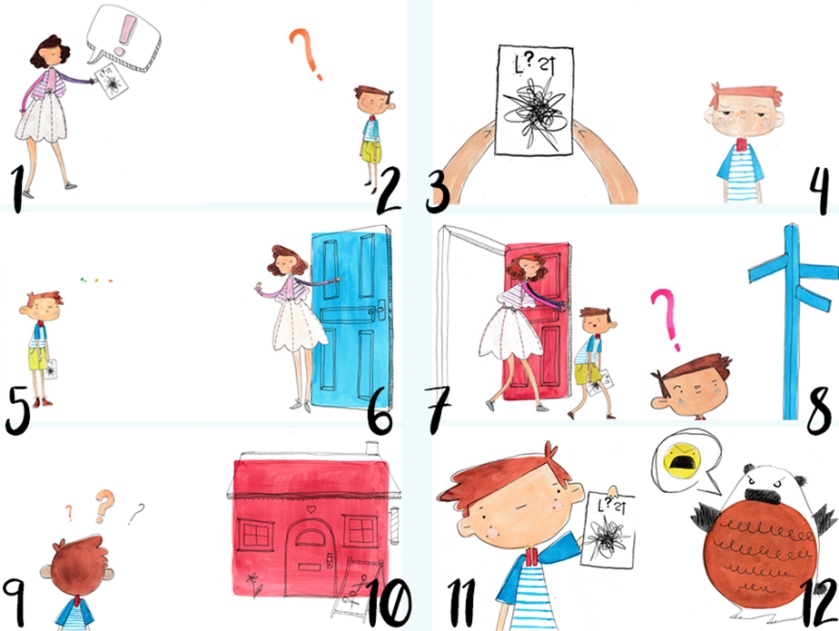
The Project
Following my last project, a book aimed at assisting young children with Asperger’s syndrome and other social difficulties to make friends and general embrace and enjoy social interaction. The book was created as a sort of activity book with both social activities to do with others and quieter solo activities that were also designed to encourage the idea of friendship. The project for this term would be similar in its nature of being a book aimed at a more specific group of children with unusual difficulties that needed to be met but this time would be more focused on story telling than on activities. This time around I would be tackling dyslexia within children and creating a story book that worked around and with the way that dyslexia affects its sufferers. The book would need to focus in on issues faced by children with dyslexia, such as their struggles with reading and verbal communication in early age, but also work with the qualities that are also common within dyslexic children, namely heightened understanding of signs and images and the common increased levels of creativity. The new book, unlike the old, will purely be an experiment in how to work around narrative rather than a collection of activities based around the issue, I do hope that the focused idea would have some kind of positive effect and message for the target audience. My aim was to produce something that could be accessible to all children, being visually stimulating enough that most would find it entertaining but also simple enough that anyone of any intellectual or reading ability would be able to connect with it and understand the book on some level. The book, as opposed to the last, would simply aim to be something of beauty as opposed to having a strict aim or goal, being created purely for the sake of enjoyment, entertainment and fun. This project connects strongly to my love of story-telling and my appreciation for children’s books and illustrations as well as being closely tied into my interest in being able to communicate well with children which has inspired me to look into teaching as a career. Though the book has little connection to teaching it is attached closely to the idea of trying to meet the needs and understand a young audience with specific needs, something crucial to teaching. I felt that this particular brief would be beneficial in allowing me the opportunity to judge how to best understand a child and become more open minded in how to best communicate with someone with difficulties, a lesson that I believe will be invaluable during my pursuit of a teaching career. Moreover, this brief, unlike my school branding idea was a much more fun alternative meaning that I would enjoy the work more and thus be able to engage more with the activity.

What is Dyslexia?
Before attempting to create a book for an audience with dyslexia it was crucial that I understood the people and the needs I would be required work around. Being that I had little prior knowledge of dyslexia it was key that I read up on the issue I would be attempting to accommodate in my book. My research, though brief, introduced me to aspects of dyslexia that I had not previously considered which helped me shape and change my project and book to better suit my audience.


The research has really helped me to better understand the needs of the target audience and thus has greatly enriched my project and made it easier to approach the challenge at hand.

AN IDEA!
For the specific group I decided to have as my target audience (young children with dyslexia) I had to come up with a way to tell a story with no text of any kind; I wanted to both accommodate and express the issues of dyslexia, namely the issues surrounding the difficulties surrounding the issue such as the struggles with reading and recognition of letters and the issues that are commonly experienced in verbal communication.
Realising that the standard form of written story telling would not be available I had to come up with a way to work around this and find a way to express emotion, set a scene and tell a story without any form of dialogue. The answer was actually quite clear; there is plenty of examples of communication without words in the world around us, from road signs to text emojis, the human mind has a great amount of skill when it comes to reading the meaning of images and as I discovered in my research, those with dyslexia generally have a greater ability in this regard meaning that this avenue of expression would be very suitable for my needs.


Inspiration
Kids books and imagery that inspired my art work.

I found myself drawn to very similar imagery (art wise, it seems I have a type); the simple designs and expressions looked nonthreatening and sweet and work well for artwork aimed at young children, and although simple a lot could be expressed in simple expression, colour and the layout of a page. Another frequent feature that I especially liked in these images and books was the look of textures in the work; the images are all filled with the textures of their creation, whether it be brush strokes from the painting or the signs of screen printing. The art I am drawn to is done in more traditional techniques that create an effect that almost looks like you colour feel the bumps and marks if you touched it; the art is more tactile and thus interesting. Though I do like graphic styled art I feel like the effects I would want to create in my own work and the effects I appreciate in others work would be naturally created through traditional means so I aim to keep using this form of working.

Character Designs







Experiments with the forms and techniques used to create various characters in the story.

Style Trials
To keep the book, story and art visually stimulating whilst not containing any words or dialect I chose to look into various styles, techniques and forms that could be used to keep the images fun, different and exciting to look at.



The experimentation allowed me to properly judge which styles and images worked best for my book, which were the most exciting and could provide entertainment in a book with no words.

Story Board




Mini Dummy Book


Scaled 2CM x 2 CM
Mini dummy book, practice to see how the book would work in it’s physical form. Created by printing and binding an A3 contact sheet.

Final Dummy


Final version of dummy book, an experiment in the final scale being 15CM x 15 CM. This allowed me to see how a final product would go together.

Final Story Board




Covers




Reflective Summary
This project allowed me a great opportunity to really think about and engage with the idea of a target audience and enabled me to properly think about how to meet the special requirements of an audience or group with distinct needs. In looking at providing a book that would be relatable and meet the needs of children with dyslexia I had created a challenge for myself to work around narrative with limited use of words or dialogue, something I had not thought about or worked with before. The needs to challenge and change the way I approached my work led me to further experiments in my work, from looking at how best to present something to the styles and techniques I would use; I found that setting this brief with the more specific target audience allowed me to think deeper into my work and thus the experimentation and exploration flowed very naturally. The experimentation allowed me to properly look at and think about what would best work for my project, in doing this I was able to assess the various aspects that played the highest importance in the story, namely the symbolism and signs and the character design. During the experiments I trialled different techniques with different materials, from pencil drawings to water colours to graphic illustration, playing with each material to see which would work best visually with the idea and work. I would have liked to play with graphic illustration more to push myself to try out a technique I was unfamiliar with but I felt that the simplistic watercolour and biro style expressed the straightforwardness of the story. Whilst looking for inspiration I always felt drawn towards artwork in which you can see the textures and how it was made, techniques that allowing the viewer to really feel the art purely through the look and the style of the art, at this point this is quality that I have not been able to achieve with a graphic tablet yet. This project, though not directly connected to teaching and thus the area I hope to go into has aided me in understanding my interests and my approach in my practice; though I had looked into a project focusing in on looking into the identity of a school that project did not truly appeal to me and I found myself feeling much more at ease when focusing in on a project in which I was able to think about how to create and communicate with and for a younger audience. This project allowed me to think creatively about how to approach issues, working around a challenging area to best achieve a creative goal, thinking best how to approaching something visually to work in a way that is suited to the need of the item. To properly communicate the story without dialogue it was required that there was another form of communication to express the story; the use of symbols and signs was an obvious choice as they appear in day to day life and most are universally understood, not only this but the current generation with its close connection to technology has been brought up alongside communication and expression being aided by imagery in the form of emojis meaning that this style of story-telling would be easily understood by the books young target audience. As for the online aspect of the project I used my own website to present both the process of making it and the final images; this was done so that both the artwork and the information would be found quickly and efficiently by an online audience. The site would also lead clearly into my other works and other online media thus a perfect platform for sharing my work. The site, due to my lack of ability in regards to technology, is very basic but I have attempted to keep a running look and theme through the use of colour, form and imagery. Overall I feel this project has been an enriching experience enabling experimentation not only in technique and style but also how I approach a creative challenge and has broadened my eyes in regards to understanding a project and an audience.

